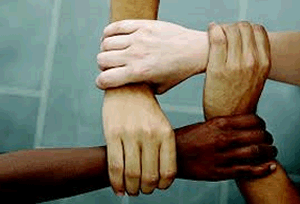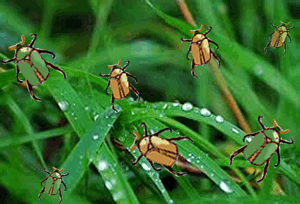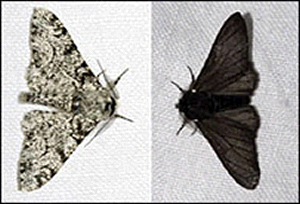Natural selection
(Catch phrase "survival of the fittest")
Solutions
1) What is meant by the term genetic variation within a population?
Genetic variation is a term that describes naturally occurring genetic differences among individuals of the same species. An example of this is skin colouration in Humans. This genetic variation allows for a greater chance of survival of a population in the face of changing environmental circumstances. This is why genetic variation is an advantage, as it prepares a population for the unexpected.

2) How does variation come about?
Through random mutation.
3) What is another term for "Survival of the fittest"? Why is this term inaccurate?
Natural selection. The term "Survival of the fittest" implies that only the strong and the able survive. But this is not the case as nature or the environment determines which characteristic is beneficial. Take for example a population of beetles with brown and green colouration, the green beetles have short legs and are very slow in moving while the green beetles are stronger and faster. In amongst green grass the brown beetles are less well camouflaged and are easily picked off by birds, thus leaving the green beetles to reproduce and pass on their genes to the next generation.

4) Explain, with one example, the term differential reproduction.
Consider the peppered moth on the right. Two variants within the population exist, the peppered and black variants. During the industrial age in Britain pollution blackened the trees and the walls of buildings, the peppered variant became easily spotted and therefore eaten more frequently by birds. There was a difference in the rate of reproduction between the black and spotted variants. This is known as differential reproduction.

5) What role does differential reproduction play in evolution?
It is the driving force that dictates the gene pool for the next generation and hence the characteristics that future generations will exhibit.
6) Explain the role natural selection and geographical isolation play in evolution of new species.
Geographical isolation enables the genetic pool of two populations to remain separate. As the environment of two isolated populations change from each other natural selection will drive changes to the gene pool of each population to the point where the two populations are so different that they cannot interbreed. A this point a new species is formed.
7) Research the term genetic drift and give one example of how genetic drift can influence the gene pool of future generations of a particular species.
Genetic drift is a random occurrence that causes a change in the gene pool of a population in favour of a particular variant. For example, a population of flies has red and black eyed flies in equal numbers. Just by chance four red eyed flies find their way into a container that is loaded onto a ship bound for Australia. On the way, the container falls overboard and finds its way to an isolated island where no flies exist. The red eyed flies now escape and reproduce producing a population of red eyed flies.
8) Place the following in their correct order for natural selection.
1) Differential reproduction, 2) mutation, 3) heredity, 4) variation.
2) => 4) => 1) => 3)